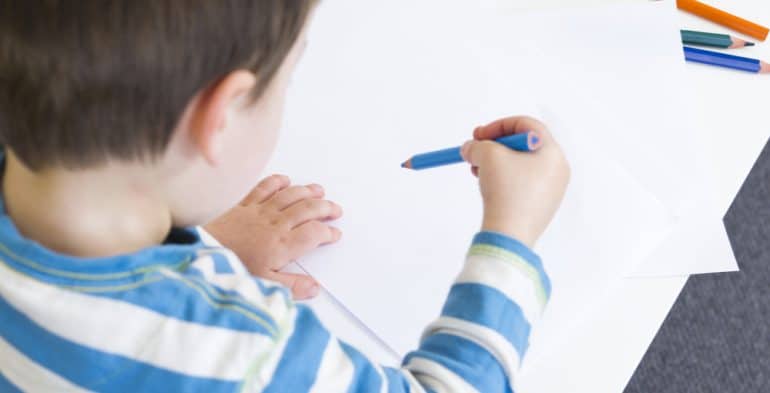
Parents and teachers often worry about a pencil grasp however I want to clarify when you should make an intervention and when not to worry. Developmentally, 3 year olds use a dagger grasp pattern because that gives them enough strength and at 4 years they start to move their fingers down into a more mature position, but they still often need to use all their fingers and haven’t developed the ability to isolate the little muscles in their fingers for finer control.
Non-functional grasps can be due to lack of practice, poor isolation of finger movements, not being able to separate the two sides of the hand, low muscle tone and/or decreased sensory awareness.
Occupational Therapists can assess and identify these factors and children will then benefit from an opportunity to develop via the specific activities recommended. We are always encouraging activities on vertical surfaces as this helps in most of these instances.
When children adopt a functional pencil grip they:
* Are efficient in their writing
* Their writing becomes more effortless
* They have more endurance
This is when you don’t need to worry. We want children to be able to write automatically, so that they can concentrate on what they’re writing. This is the goal and the reason to assist.
Below are the type of grip patterns which we worry about… and some suggestions to improve these grips.
Five finger grasp: The pencil is held with the tips of all five fingers. The movement when writing is primarily on the fifth finger side of the hand.
Recommended: The Handiwriter grip helps to separate the two sides of the hand. Often good to use in combination with The Pencil Grip or The Pinch Grip to support finger positioning.
Thumb tuck grasp: The pencil is held in a tripod or quadrupod grasp but with the thumb tucked under the index finger.
Recommended: The Pencil Grip, The Solo grip – will help support re-positioning of the thumb and keep the index finger properly on top of the pencil. Children will have individual preferences in regard to how comfortable the different grips feel.
Thumb wrap grasp: The pencil is held in a tripod or quadrupod grasp but with the thumb wrapped over the index finger.
Recommended: There are a few options including the Grotto Grip, The Crossover Grip, the StartRight – all of these grips prevent the thumb from wrapping around. The C.L.A.W is another option.
Tripod grasp with closed web space: The pencil is held with the tip of the thumb and index finger and rests against the side of the third finger. The thumb is rotated toward the pencil, closing the web space.
Recommended: Try a Jumbo grip to support the thumb webspace.
Flexed wrist or hooked wrist: The pencil can be held in a variety of grasps with the wrist flexed or bent. This is more typically seen with left-hand writers but is also present in some right-hand writers.
Recommended: This is where Handiwriters are a great tool to use. Slant boards are a good idea too.
The common theme is that the pattern inhibits the small movements of the fingers, making children use bigger muscles which aren’t designed for fine tasks. They therefore lack control and are quicker to fatigue with sustained effort. Often children end up holding on tighter, which adds to pain and fatigue. We want to see an open webspace (where the thumb and index finger form a circle), a relaxed grip, and a slightly extended wrist.
When children hold on too tight and press too hard, but their positioning is OK, you can consider: Ribie Foam Grips or Squishy Jelly Grips.
When children have a tremor, think about weighted pens and pencils.








